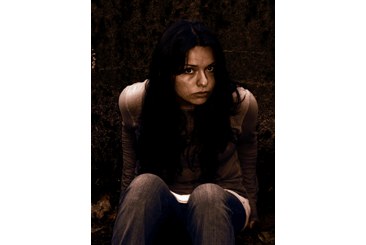|
|
| Supporting Youth Victims and Stopping the Cycle of Violence |
| By Mai Fernandez, executive director of the National Center for Victims of Crime, ncvc.org |
| Published: 05/30/2011 |
 Did you know that children are more likely to be exposed to violence and crime than adults? At last month’s National Forum on Youth Violence Prevention Summit, hosted by the U.S. Department of Justice, Attorney General Eric H. Holder Jr. spoke to a group of public and private sector representatives about youth violence and a need for action:
Did you know that children are more likely to be exposed to violence and crime than adults? At last month’s National Forum on Youth Violence Prevention Summit, hosted by the U.S. Department of Justice, Attorney General Eric H. Holder Jr. spoke to a group of public and private sector representatives about youth violence and a need for action:
“Our nation will be defined, and its progress will be determined, by the support that we provide —and the doors that we open—for our young people. The priorities that we set now are what will allow America’s next generation of leaders to rise above the current threats and obstacles and seize tomorrow’s opportunities.” It’s true. Our nation’s youth experience an alarming rate of crime victimization and exposure to violence, especially in low-income, urban communities of color. Youth who are victimized—whether through abuse, neglect, or robbery—during the already complicated transition through adolescence can experience serious disruptions of their developmental processes. That means that without the proper support to cope with their experience, they are more likely to face, and cause, additional crimes in their own community. We’ve all heard about the cycle of violence. Youth who are exposed to violence are at a higher risk of engaging in criminal behavior later in life. Youth crime victims have many of the same needs as adults after experiencing a crime (support, safety, and justice), but our criminal justice and victim response systems often fail to meet their needs. The situation worsens in urban areas and in communities of color. African American youth are three times more likely than their white peers to be victims of crime. In a study of inner-city seven-year-olds, 75 percent heard gun shots, 60 percent saw drug deals, 18 percent saw a dead body outside, and 10 percent saw a shooting or stabbing at home. Those are alarming numbers at any age—but seven? Seven years old? Urban police are in daily contact with youth who have been exposed to violence, but tension between youth and police has been a long-standing barrier to cooperation, especially in communities of color. Youth are still seen as targets of the police, rather than members of their own neighborhood. So what is the solution? There are many. First, we have to start by changing how enforcement views youth, particularly urban youth of color. Instead of seeing urban youth as the source of the problem, law enforcement agencies need to understand and acknowledge the normalization of violence in urban environments. Developing leaders who understand the unique dynamics of urban communities can help improve relationships between youth and law enforcement. And while urban neighborhoods have a strong police presence, they often lack youth-oriented community policing programs that have culturally competent law enforcement with the tools, education, ties to community-based organizations, and the will to serve youth victims of crime in urban communities. Of course, the solution doesn’t lie solely with law enforcement (so many of whom are truly doing an amazing job). It lies within victim service professionals, educators, and policy makers. Supporting youth exposed to violence and victimization requires strengthening the response by victim service providers, educators, and local policy makers to foster civil and social justice for youth crime victims. The Attorney General said it well at the Summit: “Today’s challenges demand that we educate both parents and kids; that we provide teachers, civic leaders, and public health officials with up-to-date information about youth violence trends and indicators; and that we train lawyers and law enforcement officers to respond more effectively when violence occurs.“ I look forward to the day when all victim assistance professionals have the skills to competently intervene in the lives of a diverse group of young people. Where law enforcement has effective youth-oriented policing strategies and our youth are safe, thriving, and able to fully enjoy their childhood. This is our charge. Our children’s success depends on it. Mai Fernandez is executive director of the National Center for Victims of Crime. The National Center will present its 2011 National Conference on June 20–22 in Washington, D.C. For more information about urban trauma and youth victimization, visit www.ncvc.org/conference. Click here to read more: |
MARKETPLACE search vendors | advanced search

IN CASE YOU MISSED IT
|


Comments:
No comments have been posted for this article.
Login to let us know what you think